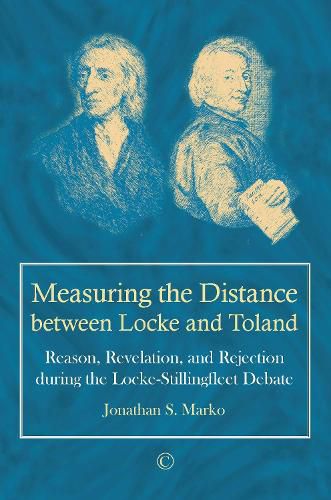Readings Newsletter
Become a Readings Member to make your shopping experience even easier.
Sign in or sign up for free!
You’re not far away from qualifying for FREE standard shipping within Australia
You’ve qualified for FREE standard shipping within Australia
The cart is loading…






Ever since Bishop Stillingfleet accused John Locke of having unwittingly paved the way for the alleged heresy promulgated in John Toland’s Christianity Not Mysterious, the latter two thinkers and works have been consistently joined in histories of philosophy covering the rise of natural religion in England. While scholars have generally thought that Locke got the better of the good bishop in their subsequent written exchanges initiated by the charge, they appear merely to assume that Stillingfleet correctly read Toland and that Locke accepts that reading. Perhaps the most obvious piece of evidence favouring that stance is that while Locke clearly admits ‘above reason’ doctrines, Toland dismisses them: Christianity is not mysterious! Through patient exposition of relevant texts and letters, deconstruction of scholarly works, and careful reasoning, Measuring the Distance between Locke and Toland shows that Toland’s deviations from Locke regarding reason and faith are far more minor than anyone has concluded. Stillingfleet was correct to connect them, but was incorrect in the way that he did it.
$9.00 standard shipping within Australia
FREE standard shipping within Australia for orders over $100.00
Express & International shipping calculated at checkout
Ever since Bishop Stillingfleet accused John Locke of having unwittingly paved the way for the alleged heresy promulgated in John Toland’s Christianity Not Mysterious, the latter two thinkers and works have been consistently joined in histories of philosophy covering the rise of natural religion in England. While scholars have generally thought that Locke got the better of the good bishop in their subsequent written exchanges initiated by the charge, they appear merely to assume that Stillingfleet correctly read Toland and that Locke accepts that reading. Perhaps the most obvious piece of evidence favouring that stance is that while Locke clearly admits ‘above reason’ doctrines, Toland dismisses them: Christianity is not mysterious! Through patient exposition of relevant texts and letters, deconstruction of scholarly works, and careful reasoning, Measuring the Distance between Locke and Toland shows that Toland’s deviations from Locke regarding reason and faith are far more minor than anyone has concluded. Stillingfleet was correct to connect them, but was incorrect in the way that he did it.